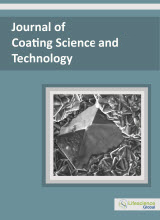jcst
Abstract : Are Diamond Surface Coatings Immune to Dry Running?
|
|
|
Abstract: It is well understood that mechanical seal performance is dependent upon the tribology of the seal face materials. Published material is available claiming the advantages of Polycrystalline Diamond (PCD) and its suitability for extended running under dry conditions; indeed, one such claim suggests that PCD coated faces are immune to dry running.In order to investigate this claim, the author undertook a series of rigorously controlled tests to evaluate the performance of mechanical seal faces coated with a Polycrystalline Diamond coating (PCD) against others with Diamond – Like Carbon (DLC) coatings. Seal surface topography was accurately measured before and after testing and was used to evaluate the wear behaviour. From the test results obtained it is concluded that neither coatings are suitable for extended dry running use. However, it was evident that seal faces coated with a new form of DLC identified as, Plasma Assisted – Chemical Vapour Deposition (PA-CVD) performed 18 times longer than the PCD coated ones before reaching a predetermined friction induced temperature. Publications can be cited as evidence that PCD coated seal faces are capable of producing very high frictional temperatures that could, in a dry running situation, allow certain liquid fuels such as flashing hydrocarbons to reach their auto-ignition temperatures. In addition, it was revealed that the PCD coated seal units are being sold at a higher cost than the equivalent DLC coated ones by a factor of three. Keywords: Mechanical seals, Diamond-Like Carbon Coating, Polycrystalline Diamond. |
Abstract : Methodologies of Application of Sol-Gel Based Solution onto Substrate: A Review
|
|
|
Abstract: Just as the diverse as the various substrates that can be coated is the choice of several coating methods by which the coating can be applied to these pretreated surfaces. They include the manual methods, where great skills and experience is needed, on the other hand there are automated and robotics coating control methods where coating can be applied with more precise manner. Sol-gel process is one of the promising bottom up nano-coating technologies to develop thin film over various metallic substrates. The property and characteristic of the resulting film is strongly influenced by the various parameters and reaction conditions of the sol-gel process and of course on the deposition techniques. In this review, we have thrown some lights on different coating application processes covering theoretical principle, advantages, disadvantages, and special various parameters controlling the final film quality. Keywords: Sol gel, coatings, application methods, thin film, process parameters. |
Abstract : Reactive DC Magnetron Sputtering-Induced the Formation of Amorphous CuN Films Embedded Nanocrystalline WC Phase
|
|
|
Abstract: A novel amorphous CuN/nanocrystal WC (nc-WC/a-CuN) film synthesized by reactive dc magnetron sputtering is reported in this paper. The nc-WC/a-CuN42 at.% film which is composed of many WC dendrite crystals of 5~10 nm with (001) orientation embedded in amorphous CuN possesses ~55 GPa hardness. The high-temperature wear analysis shows that this novel film possesses the comparable excellent friction performance with DLC film which is attributed to self-lubricant function of a-CuN; simultaneously the film was still maintaining the higher hardness at elevated temperature. Keywords: Nanocomposite film; Reactive magnetron sputtering; CuN; WC; High-temperature wear behavior. |
Abstract : Are Diamond Surface Coatings Immune to Dry Running? (2)
|
|
|
Abstract: It is well understood that mechanical seal performance is dependent upon the tribology of the seal face materials. Published material is available claiming the advantages of Polycrystalline Diamond (PCD) and its suitability for extended running under dry conditions; indeed, one such claim suggests that PCD coated faces are immune to dry running.In order to investigate this claim, the author undertook a series of rigorously controlled tests to evaluate the performance of mechanical seal faces coated with a Polycrystalline Diamond coating (PCD) against others with Diamond – Like Carbon (DLC) coatings. Seal surface topography was accurately measured before and after testing and was used to evaluate the wear behaviour. From the test results obtained it is concluded that neither coatings are suitable for extended dry running use. However, it was evident that seal faces coated with a new form of DLC identified as, Plasma Assisted – Chemical Vapour Deposition (PA-CVD) performed 18 times longer than the PCD coated ones before reaching a predetermined friction induced temperature. Publications can be cited as evidence that PCD coated seal faces are capable of producing very high frictional temperatures that could, in a dry running situation, allow certain liquid fuels such as flashing hydrocarbons to reach their auto-ignition temperatures. In addition, it was revealed that the PCD coated seal units are being sold at a higher cost than the equivalent DLC coated ones by a factor of three. Keywords: Mechanical seals, Diamond-Like Carbon Coating, Polycrystalline Diamond. |























